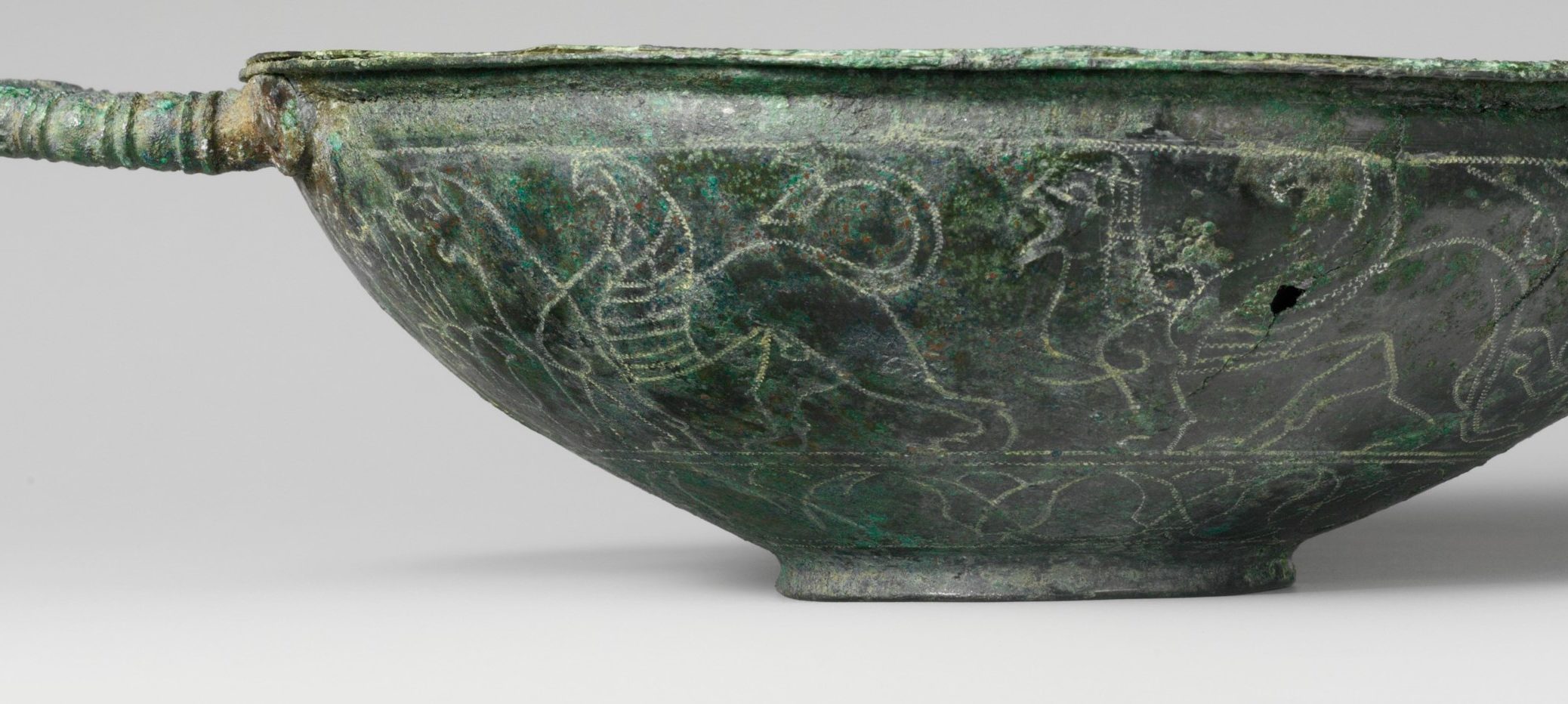This so-called kylix comes from somewhere in central Italy and dates back to the seventh century BCE, when Rome still was in its infancy, and Athenian democracy had yet to be invented; it belongs to the collection of the Metropolitan Museum of Art. It is made of bronze, but it actually looks quite rough on the surface, and a bit irregular – part of this may be preservation, but certainly not all of it (e.g. look at the handle). What I find particularly interesting, though, is the way in which the frieze of griffins has been made – they have simply been engraved in the bronze, without any relief, as would become the norm later on. This makes the bowl look simple and basic compared to some of the more complex artefacts of later periods.
Miko Flohr, 16/12/2018

